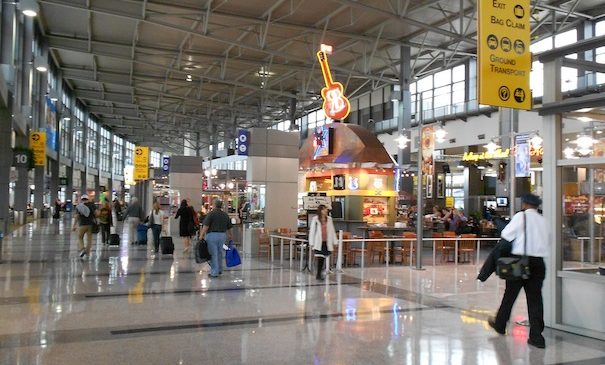Business leaders see continued growth with airport’s expansion plans
Monday, March 28, 2022 by
Chad Swiatecki Even with expansion plans somewhat scaled back because of the financial impacts of the Covid-19 pandemic, local business leaders see the continued growth of Austin-Bergstrom International Airport as vital to the region’s long-term economic prospects.
At a recent panel held by Urban Land Institute Austin, airport executives laid out the revised scope and schedule of the expansion that is expected to begin later this year and wrap up in 2027.
Before the pandemic, the 2040 master plan for the facility, which was completed in 2018, laid out a roughly $4.5 billion schedule including 61 projects that would be completed in four phases. The revised three-phase plan is now focused on optimizing the Barbara Jordan Terminal, making improvements to airfield infrastructure and developing a midfield B concourse to accommodate continued growth to 30 million annual passengers by 2037.
While traffic at the airport fell drastically through the pandemic, it returned to posting year-over-year increases last summer. Forecasts now call for 20-30 percent monthly year-over-year increases, with travelers spending aggressively on ancillary items like food and beverage items, said Mukesh Patel, the chief finance officer for the airport.
“Our region is what supports the airport, and the vice versa is the airport is what drives people and commerce in our community,” he said. “As we look at 2022, it’s like Covid never happened. It’s a very strong and resilient market and we’re seeing traffic come back in a strong way.”
Patel pointed to a 2018 study from the Texas Department of Transportation that attributed $7.8 billion in economic activity and 74,000 local jobs to the airport, which sees its biggest traffic around major local events such as South by Southwest in March and the United States Grand Prix auto race each fall.
Along with other major events and continued business growth in the area, ABIA is expected to reach 290 daily departures once the expansion is complete.
Tracy Thompson, the airport’s chief officer for administrative and external affairs, said complete cost estimates for the revised expansion are being finalized. The funding will come from a mix of existing cash reserves, future revenues and bond projects, Federal Aviation Administration grants and the federal infrastructure spending program.
Laura Huffman, president and CEO of the Austin Chamber of Commerce, said ambitious and needed infrastructure projects such as the airport expansion are part of why Austin has seen continued strong growth in business relocation and tourism.
“There’s an intersection happening right now of three things in Austin that have never quite happened before, and it’s remarkable. The number-one reason why we’re seeing what’s going on in terms of economic growth is our talent and making important investments in infrastructure,” she said. “As we sit here today, we have $20 billion worth of major infrastructure projects which we will see over the next several decades … these are things that are completely stitched together with Austin values.”
Employment at the airport will soon grow by 80 positions thanks to a $2.2 million budget amendment approved by City Council last week. In January, Council decided on $46 million in preparation costs for the improvements slated for the Jordan terminal.
The most high-profile concern over the airport’s need to grow has come from nearby residents who have protested against the planned relocation of a jet-fuel storage facility on the northbound side of U.S. Highway 183. That project was scheduled to begin soon and would have resulted in 1.5 million gallons of fuel being stored less than 500 feet away from nearby homes.
Council Member Vanessa Fuentes, whose district includes the airport, has proposed a different relocation plan for the tanks, with that matter expected to be decided on April 7.
Photo by Altairkh, CC BY-SA 3.0, via Wikimedia Commons.
The Austin Monitor’s work is made possible by donations from the community. Though our reporting covers donors from time to time, we are careful to keep business and editorial efforts separate while maintaining transparency. A complete list of donors is available here, and our code of ethics is explained here.
You're a community leader
And we’re honored you look to us for serious, in-depth news. You know a strong community needs local and dedicated watchdog reporting. We’re here for you and that won’t change. Now will you take the powerful next step and support our nonprofit news organization?











